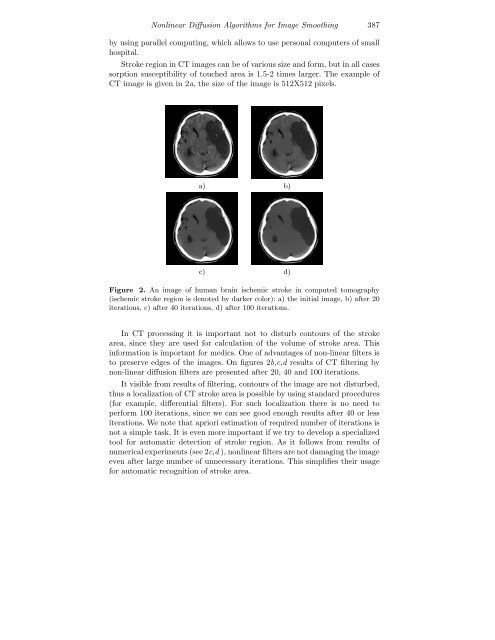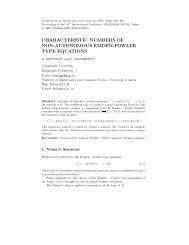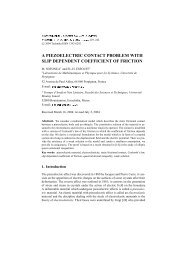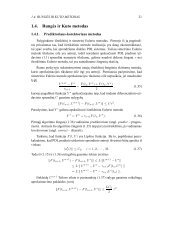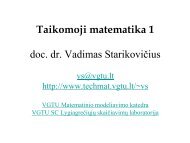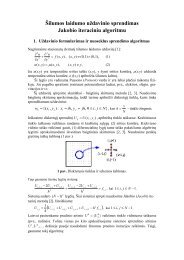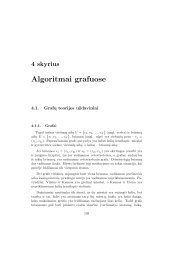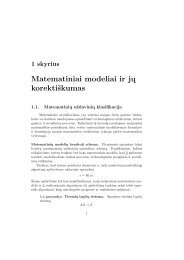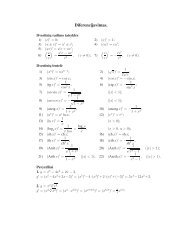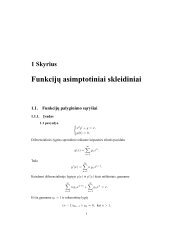NONLINEAR DIFFUSION PROBLEMS IN IMAGE SMOOTHING
NONLINEAR DIFFUSION PROBLEMS IN IMAGE SMOOTHING
NONLINEAR DIFFUSION PROBLEMS IN IMAGE SMOOTHING
You also want an ePaper? Increase the reach of your titles
YUMPU automatically turns print PDFs into web optimized ePapers that Google loves.
Nonlinear Diffusion Algorithms for Image Smoothing 387by using parallel computing, which allows to use personal computers of smallhospital.Stroke region in CT images can be of various size and form, but in all casessorption susceptibility of touched area is 1.5-2 times larger. The example ofCT image is given in 2a, the size of the image is 512X512 pixels. a) b) c) d)Figure 2. An image of human brain ischemic stroke in computed tomography(ischemic stroke region is denoted by darker color): a) the initial image, b) after 20iterations, c) after 40 iterations, d) after 100 iterations.In CT processing it is important not to disturb contours of the strokearea, since they are used for calculation of the volume of stroke area. Thisinformation is important for medics. One of advantages of non-linear filters isto preserve edges of the images. On figures 2b,c,d results of CT filtering bynon-linear diffusion filters are presented after 20, 40 and 100 iterations.It visible from results of filtering, contours of the image are not disturbed,thus a localization of CT stroke area is possible by using standard procedures(for example, differential filters). For such localization there is no need toperform 100 iterations, since we can see good enough results after 40 or lessiterations. We note that apriori estimation of required number of iterations isnot a simple task. It is even more important if we try to develop a specializedtool for automatic detection of stroke region. As it follows from results ofnumerical experiments (see 2c,d ), nonlinear filters are not damaging the imageeven after large number of unnecessary iterations. This simplifies their usagefor automatic recognition of stroke area.


